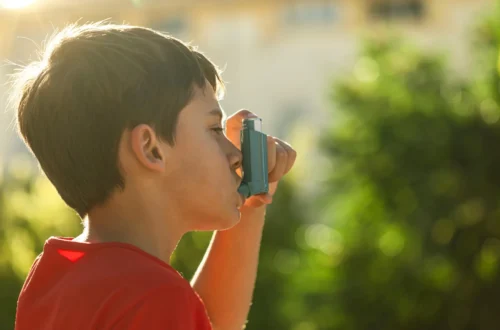Childhood exposure to chemicals utilized in the production of plastic household items poses significant health risks that may affect individuals well into adulthood, according to experts from NYU Langone Health.
Key Findings of Recent Research
This conclusion arises from a comprehensive review of numerous recent studies published online on September 21 in the journal The Lancet Child & Adolescent Health. The release coincides with a conference in New York City focused on the global implications of plastics on human health.
Evidence of Health Risks
The authors of the report highlight extensive evidence indicating that certain chemicals incorporated in industrial and domestic products may contribute to various diseases and disabilities, particularly when exposure occurs during critical developmental periods in early life. The review emphasizes three major classes of chemicals: phthalates (which add flexibility to plastics), bisphenols (which enhance rigidity), and perfluoroalkyl substances (PFAS) that provide heat resistance and water repellency.
The studies in the review assessed thousands of pregnant women, fetuses, and children, linking these toxic substances to long-term health issues, including heart disease, obesity, infertility, and asthma.
Implications for Chronic Disease
“Our findings indicate that plastic exposure may play a crucial role in the early origins of numerous chronic diseases that persist into adolescence and adulthood,” stated Dr. Leonardo Trasande, lead author of the study and pediatrician at NYU Grossman School of Medicine. “To ensure a healthier future for children, it is essential to limit the use of these materials,” he added.
Sources of Chemical Exposure
The chemicals in question are prevalent in various everyday items, such as food packaging, cosmetics, and paper receipts. Dr. Trasande, who also serves as a professor in the Department of Population Health, noted that when plastics are used, heated, or chemically processed, microplastics and nanoparticles are released, leading to ingestion.
Health Effects of Chemical Exposure
Research indicates that these chemicals can trigger an overactive immune response (inflammation) throughout the body and disrupt hormonal functions that regulate various bodily processes. Furthermore, these substances are believed to impact brain development, with numerous studies associating early-life exposure with reduced IQ and neurodevelopmental disorders, including autism and attention-deficit hyperactivity disorder (ADHD).
Strategies for Reducing Exposure
The review also explored effective strategies to mitigate plastic usage and protect human health. “Parents can take straightforward, cost-effective measures to reduce their children’s exposure to plastics,” stated Dr. Trasande, who leads NYU Grossman School of Medicine’s Division of Environmental Pediatrics and NYU Langone Health’s Center for the Investigation of Environmental Hazards. Recommended strategies include replacing plastic containers with glass or stainless steel and avoiding microwaving or dishwashing plastic items.
Dr. Trasande emphasized the importance of clear guidance from healthcare providers, empowering parents to make informed decisions regarding product usage, and encouraging partnerships with schools and community organizations to educate younger generations about the health risks of plastic exposure.
Policy Recommendations
At the policy level, the researchers advocate for stricter regulations to curtail the use of non-essential plastic items, particularly in economically disadvantaged communities that experience considerable health disparities.
Global Efforts and Economic Considerations
This review emerges amid recent discussions concerning the United Nations’ Global Plastics Treaty, which seeks to address plastic pollution through legally binding production caps endorsed by over 100 countries. Dr. Trasande underlined the necessity of a robust agreement to enhance both environmental and human health protection. He pointed out that while the economic benefits of the plastics industry are often highlighted as obstacles to regulation, the healthcare costs attributed to exposure are substantial—estimated to be approximately $250 billion annually in the United States.
Importance of Plastic in Healthcare
Despite its associated health risks, plastic remains crucial in pediatric medicine, evident in its applications in ventilators and feeding tubes for premature infants, nebulizers used by children with asthma, and infection-prevention masks. The findings do not negate the need for plastic in healthcare but rather illuminate the risks tied to its unnecessary use in other sectors.
Upcoming Symposium on Plastic and Health
The symposium will take place at NYU Langone Health on September 22 and will be live-streamed on YouTube for registered participants.
Funding and Acknowledgments
The study received funding from multiple National Institutes of Health grants (R01ES022972, R01ES029779, R01ES032214, R01ES034793, and P2CES033423) as well as support from several Argentinian foundations and the Science Fund of the Republic of Serbia. In addition to Dr. Trasande, study co-authors include Marina Olga Fernandez, PhD, from the National Council for Scientific and Technical Research, Buenos Aires, and Aleksandra Buha Đorđević, PhD, from the University of Belgrade, Serbia.
Key Health Takeaway
Childhood exposure to certain plastic-related chemicals is linked to a range of serious health issues that can persist throughout life. It is crucial for parents to adopt practical strategies to minimize exposure, and for policymakers to implement regulations aimed at reducing the use of harmful plastics.




